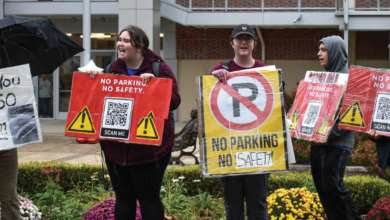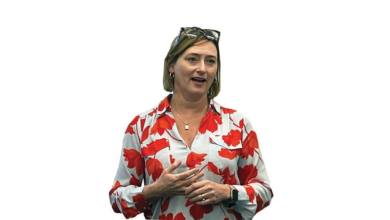Affirmative Action’s impact on Rider
By Bridget Gum-Egan
In a 6-3 decision on June 29, 2023, the U.S. Supreme Court reversed affirmative action, ruling that college admissions acceptances cannot be based on race and that colleges should look elsewhere to become more diverse.
Many wonder how this change will affect Rider’s admission, but according to multiple administrators, the university will be mostly unaffected.
Since its creation in 1961, affirmative action was intended to make college admissions more fair to individuals who are part of minority groups so everyone could experience the benefits of higher education.
With the policy being enacted during the civil rights era, many minority populations saw it as a step to correct past injustices in a society that has systematic and institutionalized racism. It was meant to provide a diverse range of perspectives to enhance higher education.
In theory, this plan seemed commendable; however, some of the associate justices felt it was a hard standard to measure, which played a key part in their decision to overturn it.
Essentially, there cannot be a direct presence of race in the application, such as a box to check in the demographics section, but if race taught a student a lesson or allowed them to overcome an obstacle, the student could include it in their essay for college admissions.
Vice President of Enrollment Management Drew Aromando explained that colleges and universities are given labels according to the percentage of students they admit each year out of the applications they receive.
Schools like Rider would be classified as moderately selective with an acceptance rate falling between 67%-81%.
The range relies on external factors such as high school graduation rate and situations like the pandemic, which affect how many students apply to college in an academic year. However, some institutions like Ivy League universities have acceptance rates lower than 10%. Aromando says these are the institutions that are most affected by the Supreme Court’s decision.
According to Aromando, Rider takes diversity into consideration by comparing its enrolled students’ demographics against the U.S. census data, New Jersey’s census data and the demographics of other universities. Aromando estimates that the comparison group contains about 180 universities.
“I look at dozens of factors, demographics being one of them, when I’m doing enrollment management strategy, just to see how we’re faring among our peers,” said Aromando.
According to the data collected, Rider is either at or near the national and state percentages of minority populations.
Aromando’s position does not allow much in-person interaction with parents and students, but he says that he has not received many concerns about the end of affirmative action and its impact here at Rider.
“There were some questions at the time, but they’re very easily addressed when you explain we don’t use any of those factors in our admissions policies,” said Aromando. “It really kind of makes it a non-issue.”
Aromando also said that Rider is focusing on other kinds of strategies to attract a more diverse population, such as switching to a test optional school for the fall 2019 incoming class and working with families on any issues with affordability.
Ultimately, Aromando is extremely proud of Rider’s population and how it compares to other schools.
“I think we know and have been working hard at trying to have a community that students feel like from the learning perspective, they can find a group of faculty and administration that matches the student profile,” said Aromando. “That’s hard work. And things like this continue that discussion and drive to improve and do better.”
Robert Stoto, vice president of human resources and affirmative action officer, works on the faculty and staff side of inclusivity and diversity at Rider and is primarily in charge of inclusive hiring initiatives.
Stoto explained that he and his office strive to attract and maintain a diverse workforce and train search committees, conducting annual reviews of the workforce and shaping new hiring initiatives based on those reviews.
Stoto also hasn’t heard any worries from Rider employees around the Supreme Court decision. However, he has heard a more consistent concern that the Rider community would like more diverse faculty and staff.
“The problem is that student turnover happens about every four to five years, while faculty and staff doesn’t turn over as frequently,” said Stoto.
He said that because this is the case, Rider tries to take advantage of the opportunities presented when there is an opening, but that it takes time.
Heeyoung Kim, Rider’s chief diversity officer and director of the teaching and learning center, said that the end of affirmative action has no impact on Rider’s admissions. Kim’s work on campus involves culturally relevant teaching strategies.
Kim explained that, over the years, she has noticed a change in demographics on campus. Her culturally relevant teaching strategies are meant to help faculty become more conscious with their instruction to meet the needs of a more diverse population.
Kim gave an example of a past situation: “In the College of Business, we did have a collaboration with China. So a couple years ago, we had a lot of Chinese students on campus … It’s very hard to pronounce the Chinese student’s names because you don’t know the [alphabet] or how they are actually translated to the English spelling. Some faculty members were just saying, ‘What is your American name or nickname?’”
Kim said that much of her training and culturally relevant teaching strategies are combined with data from the university about the changing demographics to demonstrate the importance of these trainings and why faculty needs to implement this kind of teaching into their classrooms.
Student Government Association President Naa’san Carr expressed disappointment about the end of affirmative action and its potential implications.
“It’s not really about the numbers, but really having a space where students of color or international [students can] have a place where they can feel that they belong and that’s regardless of how they look, who they are, the life that they build for themselves,” said Carr. “They should have the same opportunities to go to any school that they want to, and it’s really an issue that we really should be targeting on a [diversity, equity and inclusion] level.”
He said that so far it has not affected Rider directly, but he does worry that it could spiral going forward, much like the other efforts occurring nationally to limit DEI initiatives or practices, such as banning books or not teaching certain subjects pertaining to topics like race or gender and sexuality in some states’ curriculum.
Carr suggested that students get involved in activism and local government. He said individuals often don’t use their power, and if they did, they could make more meaningful changes.
As for faculty and staff, Carr believed that in order to make current minority students feel more supported, attending events and making sure that they fully educate themselves would be a big step to show that these students are seen, heard and supported.


